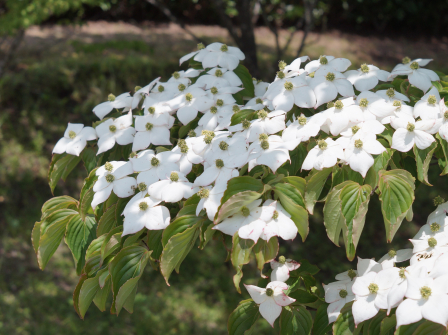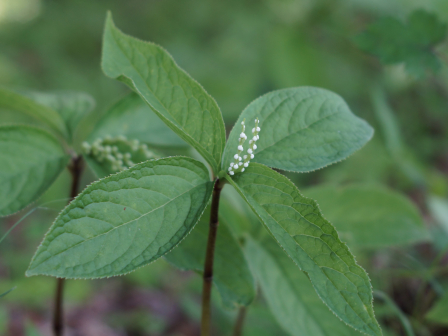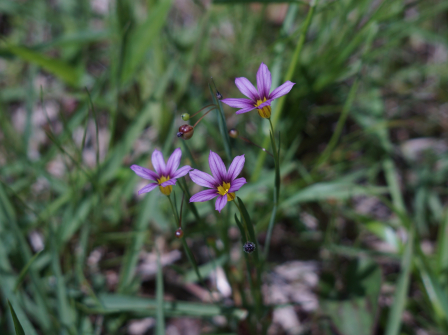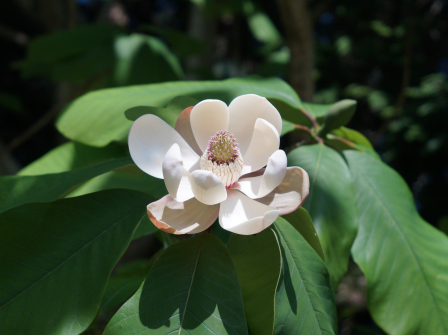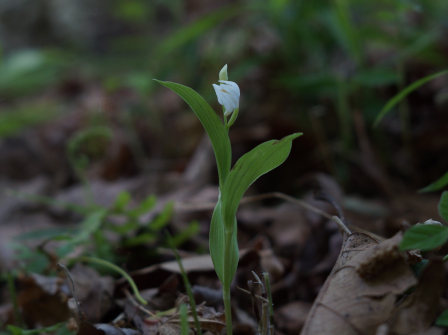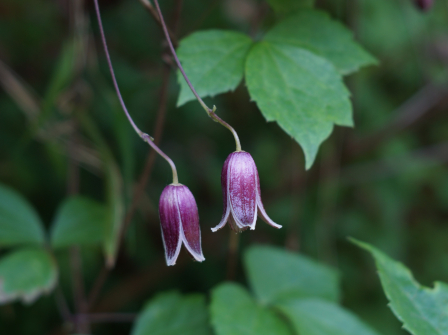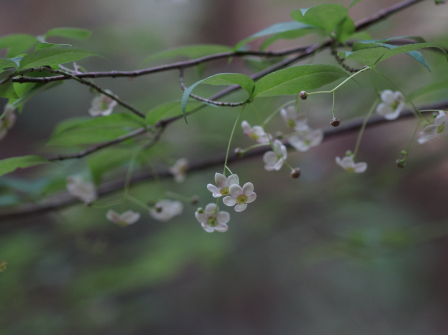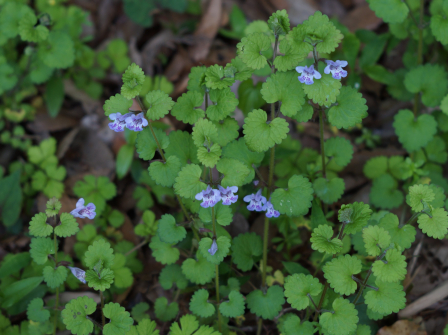フィールド日記
2023年05月
2023.05.30
ハコネウツギ
ハコネウツギが咲いています。花は初め白色ですが、しだいに赤色に変わっていくため、一本の木に白色と赤色の花が混じって咲いているように見えます。和名に箱根とつきますが、全国の沿岸地に広く見られるようです。
"Hakone-Utsugi (ハコネウツギ)" trees are in bloom. Their flowers are white when they start to bloom, and then they gradually turn red. Because of this, it looks like each tree has both white and red flowers. The Japanese name includes "Hakone (箱根)", which is a Japanese town, but "Hakone-Utsugi" trees grow widely in coastal areas in Japan.
2023.05.26
ヤマボウシ
ヤマボウシの花が咲いています。花弁のように見える白い部分は総苞と呼ばれる花の集まりを包む葉が変化したものです。北アメリカ原産のハナミズキ(別名アメリカヤマボウシ)に似ており、どちらも庭木などとして植栽されることが多いですが、ヤマボウシは日本の山地や丘陵地に自生もしています。
"Yamaboushi (ヤマボウシ)" trees are in bloom. The white parts in the photo that look like petals are not petals. They are called involucre, the leaves looking like flowers that wrap the flowers. "Yamaboushi" trees look like "Hanamizuki (ハナミズキ)" trees, which originally come from North America. Both “Yamaboushi” and “Hanamizuki” are often planted in gardens, but "Yamaboushi" trees also grow in mountains and hills in Japan.
2023.05.23
フタリシズカ
フタリシズカが咲いています。和名は能の『二人静』に由来します。写真のように茎の先端に2本の花穂をつけますが、花穂が3本以上のこともよくあります。花は変わった形をしていて、花弁やがくはなく、白い部分は雄しべです。
"Futari-Shizuka (フタリシズカ)" plants are in bloom. The name comes from a play called "Futari-Shizuka" of the Japanese traditional theatrical art "Noh (能)". They bear two flower spikes as you can see in the photo, but they often bear more than three. Their flowers are unique. The flowers have no petals or sepals. The white parts in the photo are their stamens.
2023.05.19
ニワゼキショウ
ニワゼキショウが咲いています。北アメリカ原産の帰化植物で、日当たりのよい芝地などによく見られます。花のあとには球形の果実ができます。和名は、セキショウという植物に葉のつき方が似ていて、庭に生えることに由来します。
"Niwa-Zekishou (ニワゼキショウ)" plants are in bloom. They originally come from North America and often grow in sunny grasslands. After flowering, they bear round fruits. The name comes from the fact that they grow in gardens and that the way their leaves are attached look like the plants called "Sekishou (セキショウ)".
2023.05.16
ホオノキ
ホオノキの花が咲いています。15cmほどの大きな花が咲く落葉高木です。写真の花は開き始めであまり目立ちませんが、雄しべの花糸(葯を支える柄の部分)は赤味を帯びています。葉がたいへん大きいのも特徴で、30cmほどもあり、古くから食べ物を包んだり、盛ったりするのに使われてきました。
"Hoo-No-Ki (ホオノキ)" trees are in bloom. They are deciduous tall trees blooming 15cm large flowers. Their filaments are red, which we hardly see in the photo because the flower is just starting to open. One of their characteristics is their large leaves, which are about 30 cm in length and have been used for wrapping and serving food since a long time ago.
2023.05.12
ギンラン
ギンランが咲いています。野生の蘭の一種で、林内や林縁に見られます。ギンランは地下で菌根菌と共生しており、また、菌根菌はクヌギなどの樹木と共生しているため、ギンランの生育環境は三者の共生関係によって成り立っています。しかし、生育環境の減少や園芸目的の採取によって数を減らしており、多くの自治体で絶滅が危惧されています。
2023.05.09
ハンショウヅル
ハンショウヅルが咲いています。林縁に見られるつる植物です。和名は、花の形が小型の釣鐘である半鐘(はんしょう)に似ていることに由来します。学名はClematis japonicaで日本のクレマチスを意味します。
"Hanshou-Zuru (ハンショウヅル)" plants are in bloom. They are a vine plant that grows on the edge of forests. The Japanese name comes from the fact that their flowers look like "Hanshou (ハンショウ)", which means a small hanging bell. Its scientific name "Clematis japonica" means Japanese clematis.
2023.05.05
ツリバナ
ツリバナが咲いています。山地に普通に見られる落葉低木です。名前の通り、花は枝から吊り下がって咲きます。秋には鮮やかな赤い実をつけて、よく目立ちます。
2023.05.02
カキドオシ
カキドオシが咲いています。湿った道端や林縁に生えるシソ科の多年草で、葉をもむと良い匂いがします。和名は垣通し(かきどおし)の意味で、花の後につるを伸ばし、垣根を越えて広がっていくようすに由来します。
- 1 / 1



